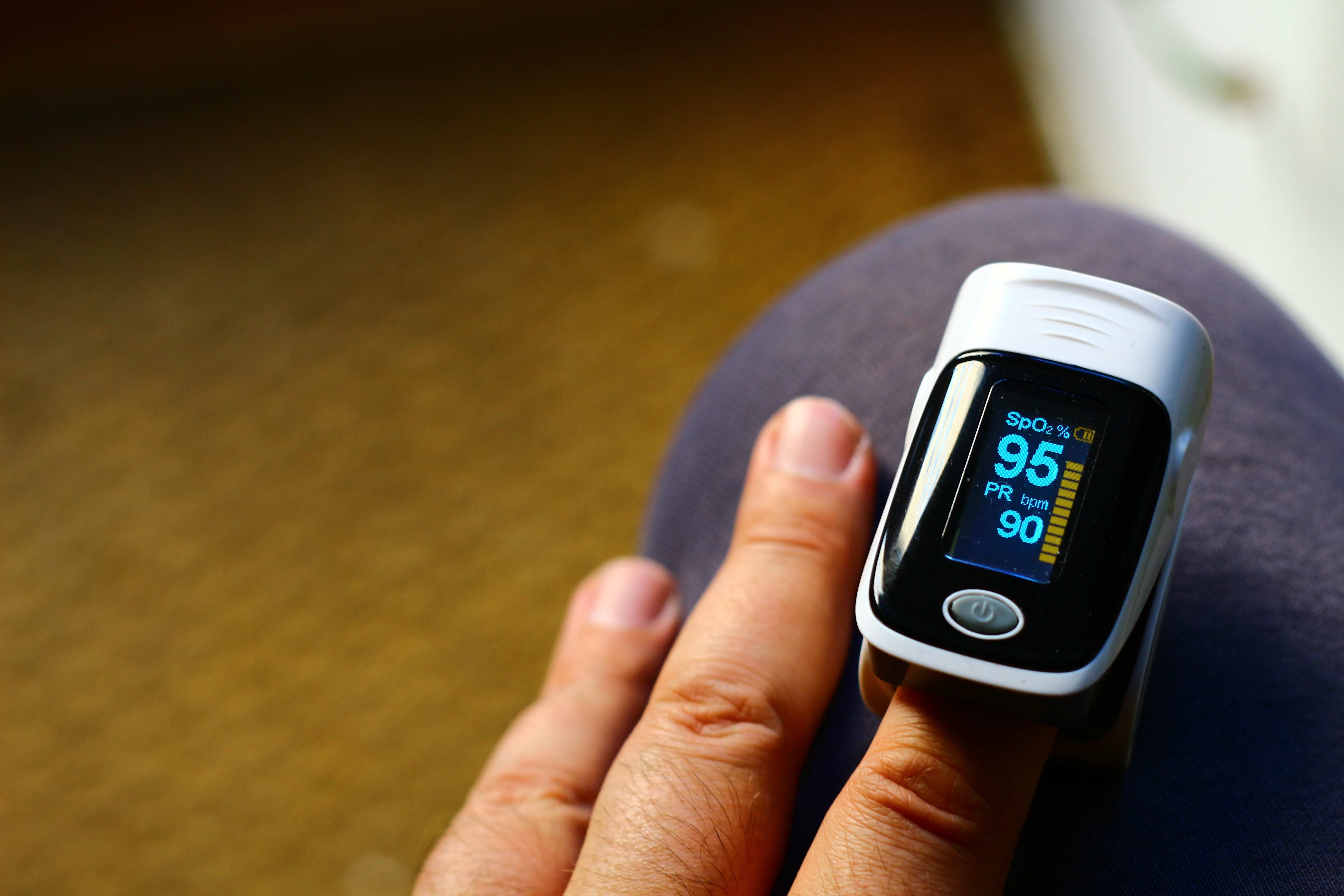Spo2 Level In Body
How does COVID-19 lower a person’s oxygen levels?
Many people with COVID-19 have low levels of oxygen in their blood, even when they feel well. Low oxygen levels can be an early warning sign that medical care is needed.
What is a pulse oximeter?
This percentage is found under the “SpO2” setting on an oximeter. A normal level of oxygen is usually at least 95% or higher. Some people with chronic lung disease or sleep apnea can have normal levels of around 90%. The SpO2 reading on a pulse oximeter shows the percentage of oxygen in someone’s blood. Normal SpO2 values vary between 90 and 100%. Good blood oxygenation is necessary to supply the energy your muscles need in order to function, which increases during a sports activity. If your SpO2 value is below 90%, that could be a sign of poor blood oxygenation, also called hypoxia.
A pulse oximeter measures how much oxygen is in someone’s blood. It is a small device that clips onto a finger, or another part of the body. They are used often in hospitals and clinics and can be bought to use at home.
Many people consider oxygen level an important sign of how well a body is working, just like a person’s blood pressure or body temperature. People who have a lung or heart condition may use a pulse oximeter at home to check how they are doing, as directed by their health care provider. People can buy pulse oximeters without a prescription at some pharmacies and stores.
Can a pulse oximeter tell if someone has COVID-19 or how well they are doing if they have it?
We do not recommend using a pulse oximeter as a way to tell if someone has COVID-19. Get tested if you have signs of COVID-19 or if you have been close to someone who has it.
If someone has COVID-19, a pulse oximeter may help them keep watch over their health and to know if they need medical care. However, while a pulse oximeter may help someone feel like they have some control over their health, it does not tell the whole story. Oxygen level measured by a pulse oximeter is not the only way to know how sick someone is. Some people may feel very sick and have good oxygen levels, and some may feel OK, but have poor oxygen levels.
Pulse oximetry results may not be as accurate for people with darker skin. Their oxygen levels are sometimes reported as higher than they really are. People who check their own oxygen levels, or those who check it for them, should keep this in mind when looking at results.
Oxygen levels may be low if someone feels short of breath, is breathing faster than usual, or feels too sick to do their usual daily activities, even if a pulse oximeter says their oxygen levels are normal. Call a doctor or another health care provider right away if you have these symptoms.
What are normal readings?
A normal level of oxygen is usually 95% or higher. Some people with chronic lung disease or sleep apnea can have normal levels around 90%. The “SpO2” reading on a pulse oximeter shows the percentage of oxygen in someone’s blood.
How To Increase Spo2 Level In Body

If your home SpO2 reading is lower than 95%, call your health care provider.
Note: As of December 15, 2020, Fitbit Sense and Versa 3 users can now view their SpO2 trends over the past week without a Premium membership.
At Fitbit, we are always working to identify new ways we can tell you more about your body and your wellness with new and existing technology. As part of our ongoing feature development, we have introduced a new capability—an estimate of your blood oxygen saturation. We’re excited to announce that in select markets, you can access it through the free SpO2 Signature clock face on your smartwatch, so that you can track potential changes in your wellbeing.*
What is Oxygen Saturation (SpO2)?
Blood oxygenation is a crucial part of your body properly metabolizing the energy it needs to function at an optimal level.Our bodies distribute oxygenated blood to every part of our body—and SpO2 is the level of oxygen in your blood.
How To Check Spo2 Level
Oxygen levels in blood tend to remain relatively constant, even during exercise and sleep. If the cardiorespiratory system is working and a person is breathing room air, typically most of the blood’s oxygen carrying capacity is used, so that blood oxygen saturation during the day is generally between 95 and 100 percent. When blood oxygen saturation levels are significantly lower than normal, it can be detrimental to the functioning of the body.
Nighttime SpO2 is usually lower than daytime SpO2 due to the fact that the total amount of air you breathe in tends to drop during sleep. In general, SpO2 values during sleep are typically above 90 percent. Tracking SpO2 can help you be more aware of your oxygen saturation trends during sleep, which may help you learn when there may be an indication of important changes in your fitness and wellness.
Of course, everyone’s oxygen levels are different. If you want to see your SpO2 trends over time, you’ll be able to view them in the new Health Metrics dashboard, available to Fitbit Premium members.**
How We Measure SpO2
There are several ways to evaluate the oxygen saturation in your blood. One method involves actually getting a sample of blood and using laboratory chemistry equipment to measure oxygen saturation, and while this is one approach, it is not practical for many uses. That’s why it became common to use pulse oximeters, which use optical techniques to non-invasively measure SpO2.
How does it work? Deoxygenated blood, which is returned to your lungs via your veins, is a slightly darker red color than the fully oxygenated blood in your arteries and arterioles (small blood vessels that bring oxygenated blood to your tissues). By using Fitbit sensors to measure the relative reflection of red and infrared light from your blood via your wrist, and seeing how it varies as your heart beats, we can estimate your SpO2 value.
It’s important to note that Fitbit does not measure or display SpO2 values below 80 percent. Fitbit SpO2 data is not intended for medical purposes, nor is it intended to diagnose, treat, cure, or prevent any disease or condition. The data provided by Fitbit SpO2 is intended to be a close estimation of your blood oxygen saturation levels, but may not be precisely accurate. You should not use or rely on Fitbit SpO2 for any medical purposes.
Get Started
What Should Spo2 Level Be
With the SpO2 Signature clock face, your Fitbit smartwatch (Fitbit Ionic, Versa family, and Fitbit Sense) will track your average SpO2 levels while you’re sleeping. To get started, install the SpO2 clock face, then go to sleep wearing your smartwatch with the clock face, and within about an hour of waking up, you’ll be able to see your average SpO2 and range. Plus, you can expect more SpO2 clock faces soon to come in 2020!
If you have a Fitbit Premium membership, you will be able to check your trends in the Health Metrics dashboard. Want to learn more about what you can expect with Health Metrics? Read all about the new dashboard here.
Not available in all markets. This feature is not intended to diagnose or treat any medical condition or for any other medical purpose. It is intended to help you manage your well being and keep track of your information.
*Not available in all markets. Availability will be rolling. You should not rely on SpO2 for any medical purposes.
**The Health Metrics dashboard and the metrics displayed in the dashboard are not available in all countries. The Health Metrics dashboard is not intended to diagnose or treat any medical condition and should not be relied on for any medical purposes.
This information is for educational purposes only and is not intended as a substitute for medical diagnosis or treatment. You should not use this information to diagnose or treat a health problem or condition. Always check with your doctor before changing your diet, altering your sleep habits, taking supplements, or starting a new fitness routine.

